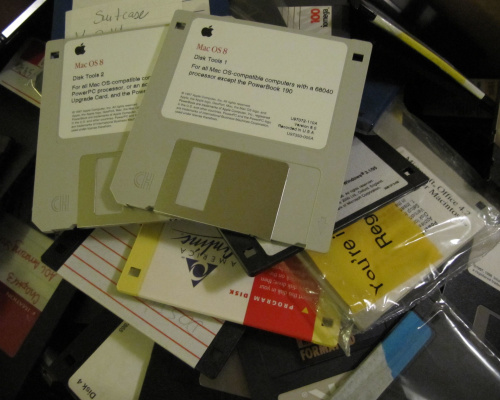Recognizing the transformation of educational technology
Date
This month, John Cromett is retiring after a 25-year career in education technology. We sat down and waxed philosophical about some of the early challenges faced when creating instructional technology solutions that the whole industry now takes for granted.
Immobile multimedia
What was classroom technology like when you first got started?
When I started doing education software product development in the nineties, there were two device options: Windows (95/98) or Macintosh desktop computers. Obtaining just one computer per classroom was still a dream in many school districts. Most schools still maintained computer labs at the time. This began to change in the late nineties when the ratio of students to computers decreased dramatically from an average of 21 students per computer to under ten. Back in these days, multimedia was just taking hold with the introduction of the iMac and stereo speakers and the Sound Blaster card. This was also in the era before flat-panel LCD screens. Most desks had no room for anything besides the big monitor and keyboard.
Surf the Net
Why did schools start buying so many computers in the late nineties? What was creating the demand?
Access to the World Wide Web really became the big driver. With the launch of the E-rate program as part of the Telecommunications Act of 1996, schools could now affordably invest in the necessary infrastructure. The E-rate program made access to the Web grow from only about 35% of schools prior to 1996, to nearly all in 2002. Once online, educators searched the Web on Netscape and Internet Explorer using Excite, AltaVista and Yahoo (Google wasn’t a popular search option until the turn of the century) to find static, text-heavy web pages that didn’t distract you with designer styling, videos, or interactivity.
Disc fever
How did schools get software in those days?
In those days, the bandwidth was barely better than what you might get on a bad airplane connection today. Even the poorest cell phone data service today was a magnitude better than the best Internet connection of schools 25 years ago. So before broadband really became a thing for schools, software was distributed physically. That meant a 10 x 14 inch shrink-wrapped box purchased by phone from a specialty catalog or at a store like Egghead Software. At this time, software was starting to be packaged on CD-ROMs instead of a stack of floppy disks. Creating a CD-ROM was a complex, expensive and time-consuming process. Once a gold master was burned and approved, you committed to stamping thousands of copies that were then screen printed, sealed in a box with supporting materials, and shipped to distributors. It was a lot like publishing a book. Fixing an error could mean pulling product from reseller inventory and either trashing it, or shipping it back to be broken down and updated with new discs. At best it meant mailing customers an updating “patch” on a floppy disc.
Get it on paper
Why such a big bulky box? It seems to me that software publishers could have just shipped a jewel case with the CD-ROM, right?
No, not in those days. The most substantial item shipped in every software box was a 300+ page manual. This indispensable text would break down how to use the software into detailed step by step processes such as what a scroll bar was, and how to use it to move around a window. For more adventurous users, most programs would also ship with a second “quick start” guide of about 30 pages, with only the need-to-knows like installing the software. If it weren’t in those two publications, it was as good as missing; no one read online documents in those days.
It’s amazing how much the production and distribution of educational software changed from those early years.
Yes, it has. When I was at Inspiration Software, we had created the most popular educational software at the time. The outlining and concept mapping tool was a wild success and was installed on approximately four out of five computers in schools across the country. And that was before digital downloads! The work that Clarity has been doing for the last two decades makes that level of adoption in classrooms much easier for more companies to achieve.

